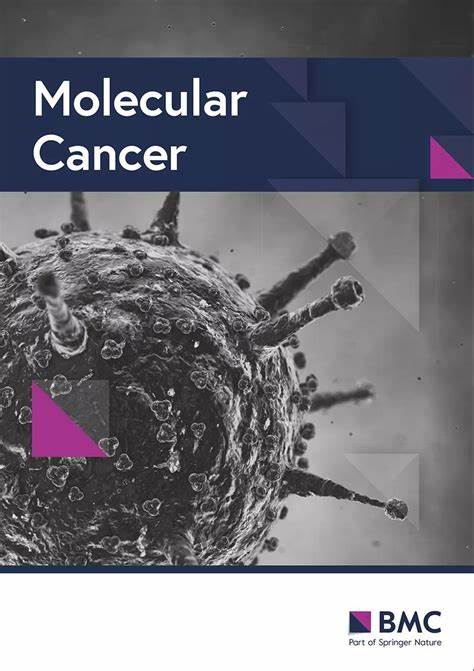Differential susceptibility and role for senescence in CART cells based on costimulatory domains
IF 33.9
1区 医学
Q1 BIOCHEMISTRY & MOLECULAR BIOLOGY
引用次数: 0
Abstract
Despite the success of chimeric antigen receptor T (CART) cell therapy in hematological malignancies, durable remissions remain low. Here, we report CART senescence as a potential resistance mechanism in 41BB-costimulated CART cell therapy. To mimic cancer relapse, we utilized an in vitro model with repeated CART cell activation cycles followed by rest periods. Using CD19-targeted CART cells with costimulation via 4-1BB-CD3ζ (BBζ) or CD28-CD3ζ (28ζ), we showed that CART cells undergo functional, phenotypical, and transcriptomic changes of senescence, which is more prominent in BBζ. We then utilized two additional independent strategies to induce senescence through MYC activation and irradiation. Induction of senescence impaired BBζ activity but improved 28ζ activity in preclinical studies. These findings were supported by analyses of independent patient data sets; senescence signatures in CART cell products were associated with non-response to BBζ but with improved clinical outcomes in 28ζ treatment. In summary, our study identifies senescence as a potential mechanism of failure predominantly in 41BB-costimulated CART cells. We identified senescence as a cause of failure in CART cell therapy, predominantly in 4-1BB-costimulated CART cells.基于共刺激结构域的CART细胞衰老的不同易感性和作用
尽管嵌合抗原受体T (CART)细胞治疗在血液系统恶性肿瘤中取得了成功,但持久的缓解仍然很低。在这里,我们报道了CART衰老是41bb共刺激CART细胞治疗的潜在耐药机制。为了模拟癌症复发,我们使用了一个体外模型,重复CART细胞激活周期,然后休息。通过4-1BB-CD3ζ (BBζ)或CD28-CD3ζ (28ζ)共刺激cd19靶向CART细胞,我们发现CART细胞经历了衰老的功能、表型和转录组变化,其中在BBζ中更为突出。然后,我们利用另外两种独立的策略通过MYC激活和照射来诱导衰老。在临床前研究中,衰老的诱导会损害BBζ的活性,但会改善28ζ的活性。这些发现得到了独立患者数据集分析的支持;CART细胞产物的衰老特征与BBζ无反应相关,但与28ζ治疗的临床结果改善有关。总之,我们的研究确定衰老是主要在41bb共刺激的CART细胞中失败的潜在机制。我们发现衰老是CART细胞治疗失败的一个原因,主要是在4- 1bb共刺激的CART细胞中。
本文章由计算机程序翻译,如有差异,请以英文原文为准。
求助全文
约1分钟内获得全文
求助全文
来源期刊

Molecular Cancer
医学-生化与分子生物学
CiteScore
54.90
自引率
2.70%
发文量
224
审稿时长
2 months
期刊介绍:
Molecular Cancer is a platform that encourages the exchange of ideas and discoveries in the field of cancer research, particularly focusing on the molecular aspects. Our goal is to facilitate discussions and provide insights into various areas of cancer and related biomedical science. We welcome articles from basic, translational, and clinical research that contribute to the advancement of understanding, prevention, diagnosis, and treatment of cancer.
The scope of topics covered in Molecular Cancer is diverse and inclusive. These include, but are not limited to, cell and tumor biology, angiogenesis, utilizing animal models, understanding metastasis, exploring cancer antigens and the immune response, investigating cellular signaling and molecular biology, examining epidemiology, genetic and molecular profiling of cancer, identifying molecular targets, studying cancer stem cells, exploring DNA damage and repair mechanisms, analyzing cell cycle regulation, investigating apoptosis, exploring molecular virology, and evaluating vaccine and antibody-based cancer therapies.
Molecular Cancer serves as an important platform for sharing exciting discoveries in cancer-related research. It offers an unparalleled opportunity to communicate information to both specialists and the general public. The online presence of Molecular Cancer enables immediate publication of accepted articles and facilitates the presentation of large datasets and supplementary information. This ensures that new research is efficiently and rapidly disseminated to the scientific community.
 求助内容:
求助内容: 应助结果提醒方式:
应助结果提醒方式:


